I never truly understood what made Batangueños so proud of their Goto until my cousin, Kuya Ornap, invited me to spend a weekend at their home in Lipa.
There, in their sun-drenched kitchen with its well-worn wooden chopping board and decades-old kaldero, he taught me the secrets of making authentic Gotong Batangas.
"Hindi basta-basta goto 'to," he'd say with a knowing smile, showing me how to properly clean the tripe and patiently explaining why we had to let the broth simmer until the afternoon shadows grew long.
The rich, aromatic soup he crafted that rainy afternoon wasn't just food, it was a warm embrace in a bowl, the kind that makes you understand why Batangueños consider this more than just goto.
Now every time I make this gotong Batangas recipe in my own kitchen, I can't help but smile knowing I'm sharing a piece of Batangas heritage with my own family.
Jump to:
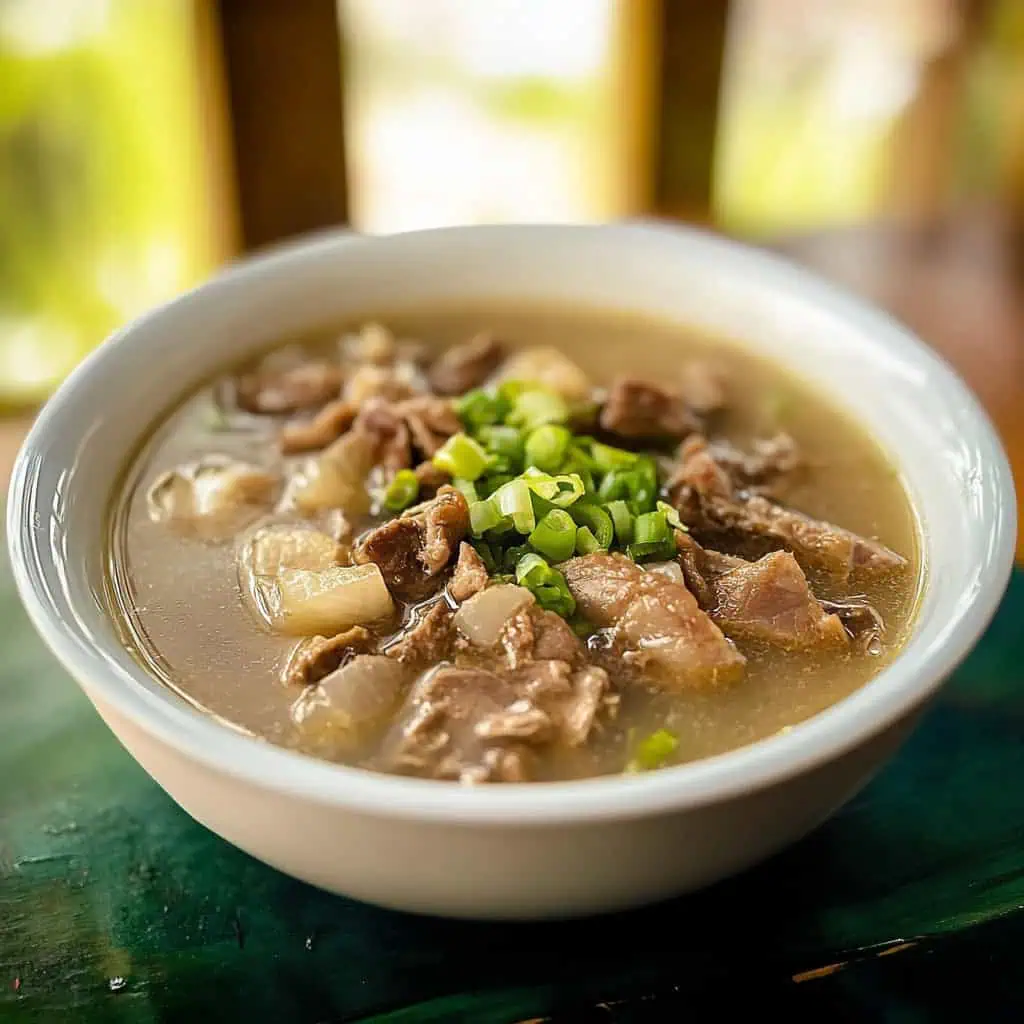
Why You'll Love This Recipe
- Authentic Batangas flavor passed down through generations
- Rich, deeply satisfying beef broth
- Perfect combination of tender meat and tripe
- Customizable spice levels
- Budget-friendly yet filling
- Great for batch cooking and freezing
- Perfect for rainy days and cold weather
Ingredients
The ingredients in Gotong Batangas have been carefully selected through generations of tradition. Beef tripe forms the foundation, prized for its unique texture and ability to absorb flavors while being economical. The combination of garlic, onion, and ginger creates the aromatic base that defines Filipino cooking, while annatto powder gives the soup its distinctive golden color without affecting flavor.
Bay leaf and peppercorns add subtle depth without overwhelming the delicate meat flavors. The soup relies on both beef meat and broth cubes for a rich, savory profile that develops during slow cooking.
Fresh garnishes—spring onions, calamansi, and fish sauce—are added at serving to brighten the dish and allow each person to customize their bowl according to taste, honoring the Filipino tradition of communal yet personalized dining.
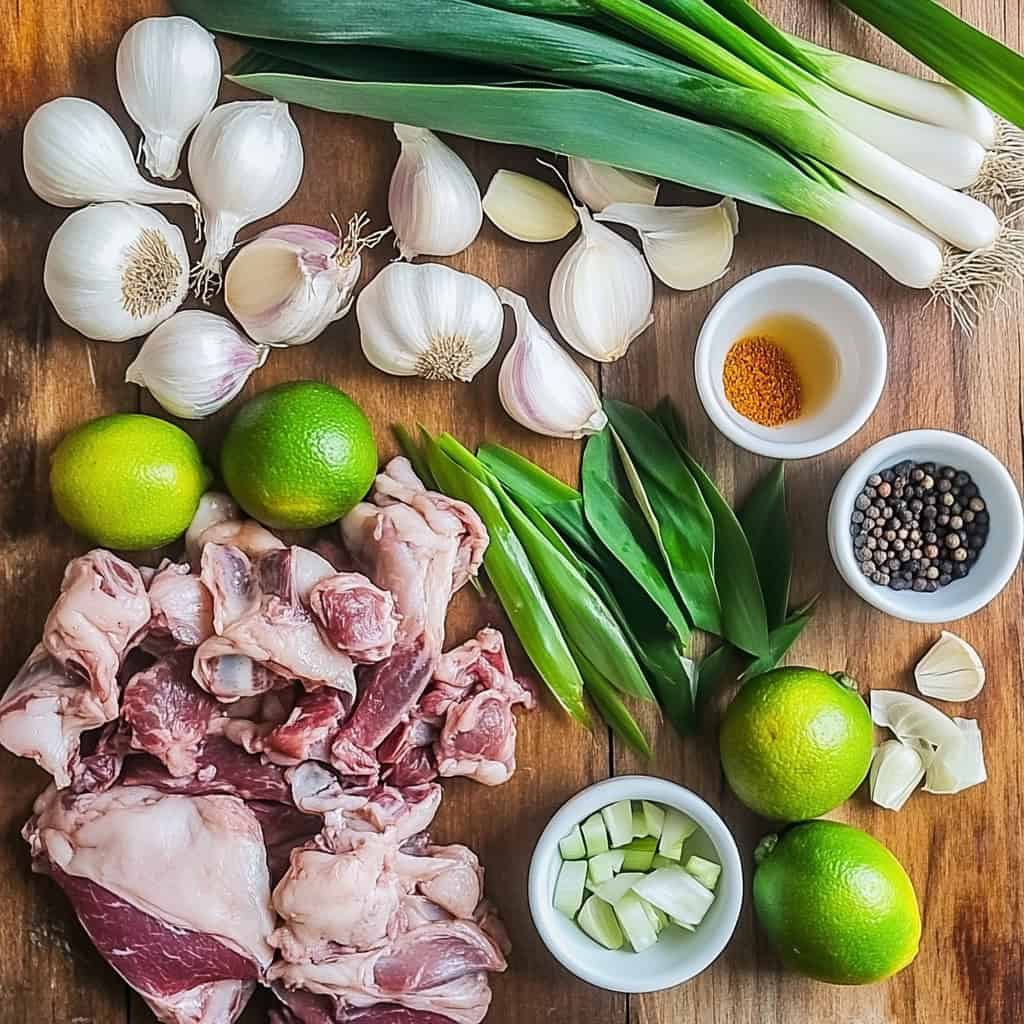
For the Soup Base:
- 1 kilogram beef tripe - The star ingredient that gives the dish its distinctive character and texture
- ½ kilo beef - Cut into strips, adds meaty flavor and protein
- 6 cloves garlic - Divided, provides aromatic base for the soup
- 1 large onion - Sliced and divided, adds sweetness and depth
- 2 thumb-sized ginger - Divided, contributes warmth and spiciness
- 1 bay leaf - Adds subtle herbal notes to the broth
- 2 tablespoon cooking oil - For sautéing aromatics
- 2 Knorr Beef broth cubes - Enhances the beef flavor
- 1 teaspoon annatto powder - Gives the soup its distinctive golden-orange color
- 10 cups water - Forms the base of the broth
- ½ teaspoon peppercorns - Adds mild heat and complexity
- Salt - To taste, enhances all flavors
For Serving:
- Spring onions - Chopped, adds fresh color and mild onion flavor
- Calamansi - Provides essential acidity that brightens the soup
- Fish sauce (patis) - Adds umami depth and saltiness
- Ground black pepper - For customizable heat
Equipment
- Large stock pot (kaldero) - Essential for slow-cooking the tripe and meat to develop a rich, flavorful broth. The heavy bottom distributes heat evenly for consistent simmering.
- Sauté Pan (kawali) - Used for browning aromatics and meat to develop deeper flavors before adding them to the main broth.
- Sharp knife (kutsilyo) - For precise cutting of meat, tripe, and vegetables to ensure consistent cooking.
- Wooden spoon (sandok na kahoy) - Ideal for stirring without scratching your pot and distributing heat evenly throughout the cooking process.
- Skimmer (Siyanse) - Critical for removing scum during cooking to ensure a clear, clean-tasting broth.
- Cutting board (Sangkalan) - Provides a stable, clean surface for all prep work.
- Measuring spoons and cups (panukat) - Ensures accurate measurements for consistent results every time.
- Fine-mesh strainer - Essential for thoroughly cleaning and rinsing the tripe, which is crucial for a clean-tasting soup.
- Heavy-duty brush - Helpful for scrubbing the tripe during the cleaning process.
- Large mixing bowl - For soaking and cleaning the tripe.
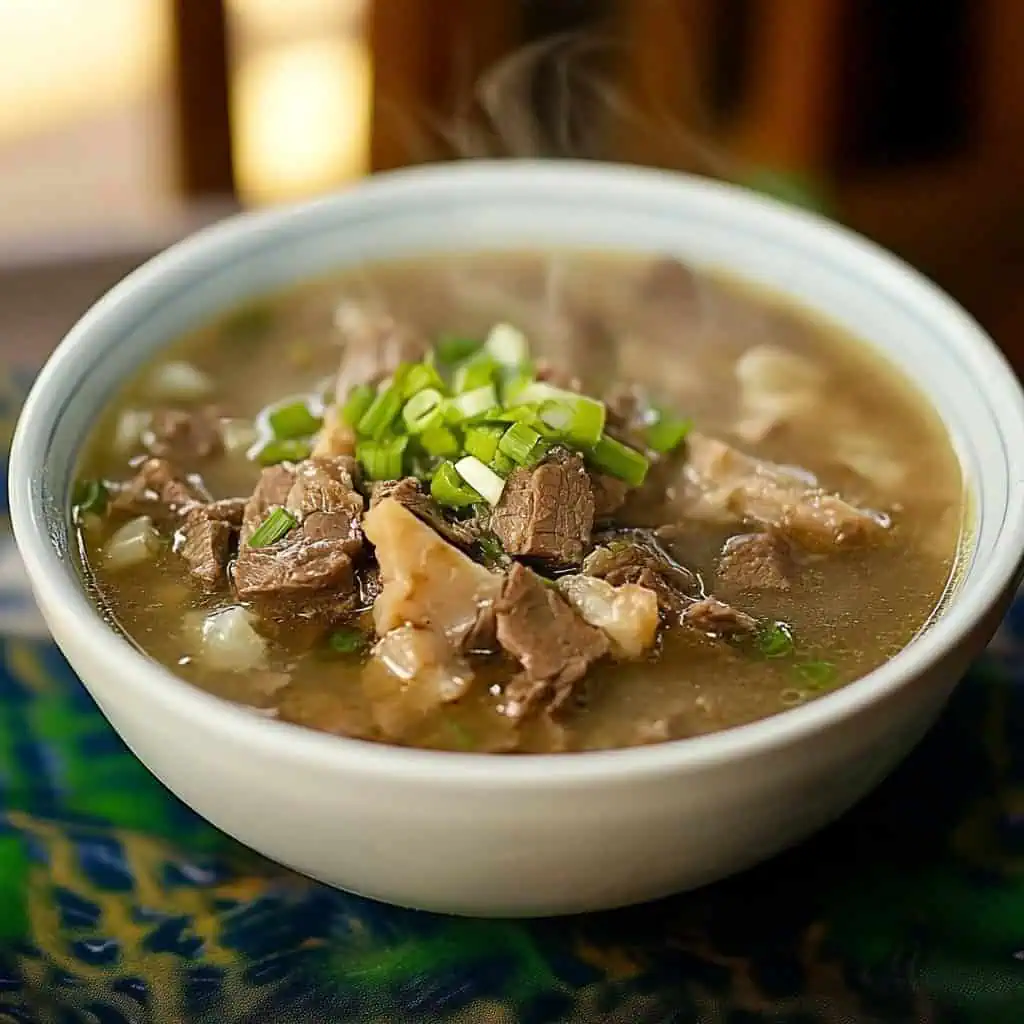
How To Make
- Start by washing the beef tripe thoroughly under cold running water. Rub rock salt all over the tripe and soak it in vinegar for 15 minutes. Rinse well, scrub with a brush, then parboil for 15 minutes. Drain and rinse again with cold water.
- Put the cleaned tripe and beef strips in a large pot with 10 cups of water. Bring to a boil over medium heat. Use a skimmer to remove any scum that floats to the top for a cleaner-tasting broth.
- Turn the heat to low. Add half of the garlic (crushed), half of the sliced onions, half of the ginger (crushed), bay leaf, salt, and peppercorns. Let this cook slowly for about 1½ hours until the meat gets tender, checking occasionally.
- Once tender, take out the meat and tripe. Cut the tripe into strips that are easy to eat, about 1-inch long and ¼-inch wide.
- Get a sauté pan and heat the cooking oil over medium heat. Cook the remaining garlic, onions, and ginger until fragrant and the onions turn translucent. Add your sliced tripe and beef. Cook for 3 minutes, stirring occasionally.
- Add the annatto powder and beef cubes. Continue cooking until the meat absorbs the seasoning and develops a rich color, about 2-3 minutes.
- Return everything back to the pot with the broth. Bring to a boil, then add salt and pepper to taste. Reduce heat and simmer for 15 more minutes to blend all the flavors.
- Serve hot in individual bowls. Top with freshly chopped spring onions. Place fish sauce, ground pepper, and fresh calamansi on the table so everyone can season their soup according to preference.
- Best enjoyed with hot steamed rice. Makes enough for 6 people with generous servings.

Tips from Lola's Kitchen
- Take your time cleaning the tripe - This is the most crucial step for a clean-tasting soup. Don't rush it, and change the water multiple times if needed.
- For a more robust flavor, char the onions and ginger slightly before adding them to the broth.
- Simmer, don't boil - A gentle simmer yields the most flavorful broth and prevents the meat from becoming tough.
- Make it a day ahead if possible - Like many soups, Gotong Batangas tastes even better the next day when the flavors have had time to meld.
- Always use fresh beef tripe - Look for a clean, pale color without strong odors. Ask your butcher about the freshest options.
- Save the trimmings - Any extra beef or tripe can be finely chopped and used in another dish like sisig.
- Skim diligently - Remove the scum that rises to the top frequently during the first boil for the clearest, most flavorful broth.
- Trust your nose - The soup should smell rich and beefy without any off odors. If something smells wrong, it probably is.
- Let it rest before serving - Allow the soup to sit for 10-15 minutes after cooking to let the flavors settle.
Substitutions
- Beef Tripe: If honeycomb tripe is unavailable, you can use book tripe, though the texture will be slightly different. In a pinch, additional beef meat can substitute, though you'll lose the distinctive tripe texture.
- Annatto Powder: Paprika makes a good substitute, providing similar color with a slightly different flavor profile. Turmeric is another alternative but use only ¼ teaspoon as it has a stronger flavor.
- Beef Broth Cubes: Homemade beef stock is an excellent upgrade. Alternatively, beef bouillon powder or even chicken stock can work in a pinch.
- Calamansi: Fresh lemon or lime juice can substitute, though start with less as they're more acidic.
- Fish Sauce: Light soy sauce can replace fish sauce if needed, though the flavor profile will change slightly.
- Spring Onions: Chives or thinly sliced leeks can provide a similar garnish.
- Bay Leaf: A small piece of lemongrass or a pinch of dried thyme can provide an aromatic alternative.
Troubleshooting
- Tough Tripe: If your tripe remains tough after the recommended cooking time, extend the simmering in 30-minute intervals until it reaches the desired tenderness. Adding a tablespoon of vinegar to the cooking water can also help tenderize stubborn tripe.
- Cloudy Broth: If your broth appears cloudy, strain it through a fine-mesh sieve lined with cheesecloth and return to a clean pot before continuing.
- Too Salty: Add quartered potatoes to the soup and simmer for 15 minutes - they'll absorb excess salt. Remove before serving. Alternatively, add more water and a squeeze of calamansi to balance the flavors.
- Too Bland: Enhance flavor with additional fish sauce, a splash of cooking wine, or by simmering with beef bones for an extra 30 minutes.
- Greasy Surface: If too much fat accumulates on the surface, chill the soup for 30 minutes and skim off the hardened fat, or gently lay paper towels on the surface to absorb excess oil.
- Thin Consistency: If your broth seems watery, simmer uncovered for an additional 15-20 minutes to reduce and concentrate the flavors.
- Bitter Taste: This may indicate that the tripe wasn't cleaned thoroughly. In this case, drain half the broth, add fresh water, and continue cooking with additional aromatics.
Storage & Reheating
- Refrigeration: Allow the soup to cool completely before transferring to airtight containers. It will keep for up to 4 days in the refrigerator. The flavor actually improves after a day as the ingredients continue to meld.
- Freezing: For longer storage, freeze in portion-sized containers for up to 3 months. Leave some space at the top as the soup will expand when frozen.
- Thawing: Thaw overnight in the refrigerator for best results.
- Reheating: Gently reheat on the stovetop over medium-low heat until just simmering. Avoid boiling vigorously as this can toughen the meat and tripe.
- Refreshing: Add a small splash of water if the soup has thickened too much during storage. Adjust seasoning as needed, as salt intensity can change after refrigeration.
- Serving after storage: Add a fresh squeeze of calamansi and new garnishes of spring onions just before serving to brighten the reheated soup.
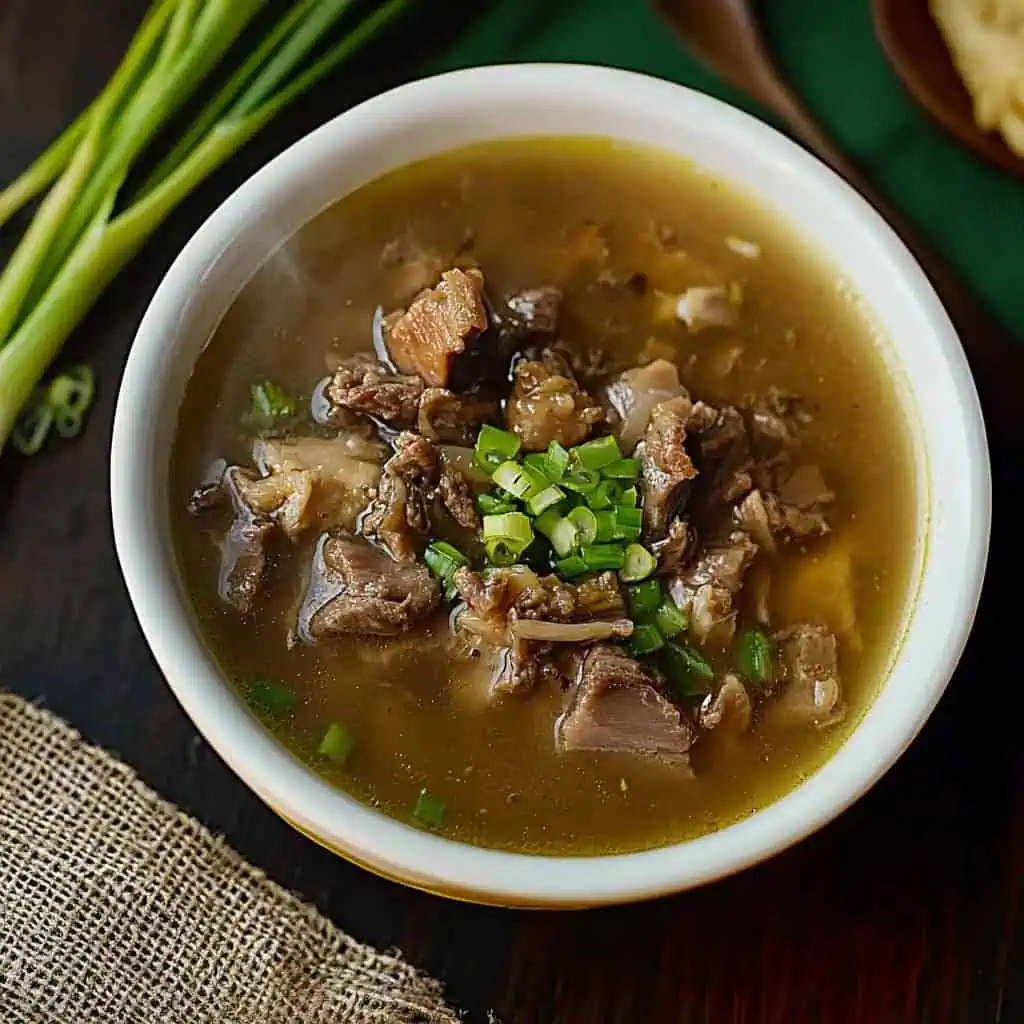
FAQ
Why is cleaning the tripe so important?
Tripe requires thorough cleaning to remove any impurities and potential off-flavors. This step is non-negotiable for achieving the clean, authentic taste that defines a proper Gotong Batangas.
How do I know when the tripe is properly cooked?
Properly cooked tripe should be tender but still have a slight chew, similar to the texture of calamari. It shouldn't be rubbery or too soft. The tripe should easily yield when pierced with a fork.
Can I make this in a pressure cooker or Instant Pot?
Yes! Cook the cleaned tripe and beef under pressure for about 30-35 minutes with all the aromatics. Then proceed with the sautéing steps before combining everything again.
Is Gotong Batangas healthy?
Yes, tripe is high in protein and contains beneficial minerals like zinc and vitamin B12. The soup is relatively low in carbohydrates while being filling and nutritious, though it is moderately high in cholesterol.
How spicy is traditional Gotong Batangas?
Traditional Gotong Batangas is mildly spiced with black pepper and ginger providing subtle heat. The dish isn't inherently spicy, which allows each person to adjust the heat level with condiments at the table.
Can I prepare any components ahead of time?
Absolutely! The tripe can be cleaned and pre-cooked a day in advance, then refrigerated. This actually saves significant time on the day of cooking.
What's the difference between Manila Goto and Gotong Batangas?
Manila Goto typically includes rice and various innards mixed together in a thicker consistency, while Gotong Batangas features a clearer broth focused on tripe and beef with no rice in the soup itself.
What's the best rice to serve with Gotong Batangas?
Freshly cooked white jasmine rice is traditional. The plain rice provides the perfect contrast to the flavorful soup.
Can I add vegetables to make it more nutritious?
While not traditional, you can add moringa leaves (malunggay) or spinach in the last 5 minutes of cooking for added nutrition without compromising the authentic flavor.
How can I make this dish more economical?
Tripe is already an economical cut, but you can extend the dish by adding more vegetables like carrots or potatoes, or serving smaller portions of soup with more rice.
Related
Looking for other recipes like this? Try these:
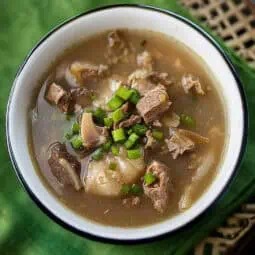
Authentic Gotong Batangas Recipe (Batangas-Style Beef Tripe Soup)
Equipment
- Large stock pot (kaldero) For slow-cooking the tripe and meat
- Sauté Pan (kawali) For browning aromatics and meat
- Sharp knife (kutsilyo) For slicing meat and vegetables
- Wooden spoon (sandok na kahoy) For stirring without scratching the pot
- Skimmer (Siyanse) For removing scum during cooking
- Cutting board (Sangkalan) For prep work
- Measuring spoons and cups (panukat) For accurate measurements
- Fine-mesh strainer For cleaning the tripe
Ingredients
For the Soup Base:
- 1 kilogram beef tripe tuwalya ng baka, bleached and cleaned
- ½ kilo beef cut into strips
- 6 cloves garlic bawang, divided
- 1 large onion sibuyas, sliced and divided
- 2 thumb-sized ginger luya, divided
- 1 bay leaf dahon ng laurel
- 2 tablespoon cooking oil
- 2 Knorr Beef broth cubes
- 1 teaspoon annatto powder atchuete
- 10 cups water
- ½ teaspoon peppercorns paminta
- Salt asin to taste
For Serving:
- Spring onions sibuyas na mura, chopped
- Calamansi
- Fish sauce patis
- Ground black pepper
Instructions
- Start by washing the beef tripe thoroughly under cold running water. Rub rock salt all over the tripe and soak it in vinegar for 15 minutes. Rinse well, scrub with a brush, then parboil for 15 minutes. Drain and rinse again with cold water.
- Put the cleaned tripe and beef strips in a large pot with 10 cups of water. Bring to a boil over medium heat. Use a spoon to remove any scum that floats to the top.
- Turn the heat to low. Add half of the garlic (crushed), half of the sliced onions, half of the ginger (crushed), bay leaf, salt, and peppercorns. Let this cook slowly for about 1½ hours until the meat gets tender.
- Once tender, take out the meat and tripe. Cut the tripe into strips that are easy to eat.
- Get a pan and heat some oil over medium heat. Cook the remaining garlic, onions, and ginger until they smell good and the onions turn clear. Add your sliced tripe and beef. Cook for 3 minutes.
- Add the annatto powder and beef cubes. Keep cooking until the meat soaks up all the seasoning.
- Put everything back in the pot with the broth. Let it boil, then add salt and pepper to taste. Cook for 15 more minutes to blend all the flavors.
- Serve hot in bowls. Top with chopped spring onions. Put fish sauce, ground pepper, and fresh calamansi on the table so everyone can season their soup just how they like it.
- Best enjoyed with hot rice on a rainy day. Makes enough for 6-8 people.
- Remember: The key to great Gotong Batangas is patience while cleaning the tripe and letting the soup cook slowly. Your house will smell amazing, and the wait will be worth it.
Tips from Lola's Kitchen
- Always use fresh beef tripe - look for a clean, pale color without strong odors
- For extra flavor, add beef bones during the simmering process
- Don't skip the parboiling step - it ensures clean-tasting soup
- Save time by asking your butcher to clean the tripe for you
- The soup tastes better the next day when flavors have melded
Nutrition
The Story Behind Gotong Batangas
Gotong Batangas, a beloved cornerstone of Filipino cuisine, traces its roots to the bustling kitchens of Lipa City, where it was originally known as Gotong Lipa. Unlike its Manila counterpart, which primarily uses innards and rice, this Batangueño version distinguishes itself with its clear, flavorful broth and emphasis on perfectly prepared beef tripe and meat strips.
The dish emerged from the province's rich cattle-raising heritage, where Batangas became known as a center of the livestock industry in Southern Luzon. Local families developed this recipe to utilize every part of the cattle, transforming humble ingredients into a masterpiece of Filipino comfort food. The addition of annatto (atchuete) gives the soup its distinctive color, while the careful preparation of tripe showcases the meticulous cooking traditions passed down through generations of Batangueño families.
What truly sets Gotong Batangas apart is its role in the community. In the public markets of Lipa, Tanauan, and Batangas City, goto stalls open before dawn to serve workers and market vendors, making it an essential part of the Batangueño breakfast tradition. During the cold months of December through February, when the monsoon brings steady rains to the region, Gotong Batangas becomes more than just food – it transforms into a source of warmth and comfort that brings families together.
Today, the dish has transcended its humble origins to become a source of regional pride, with many families guarding their own special versions of the recipe. Some add beef bones for extra richness, while others swear by specific cooking times or special spice combinations. Despite these variations, the essence remains the same: a soul-warming soup that represents the heart of Batangueño cuisine and continues to captivate both locals and visitors alike.
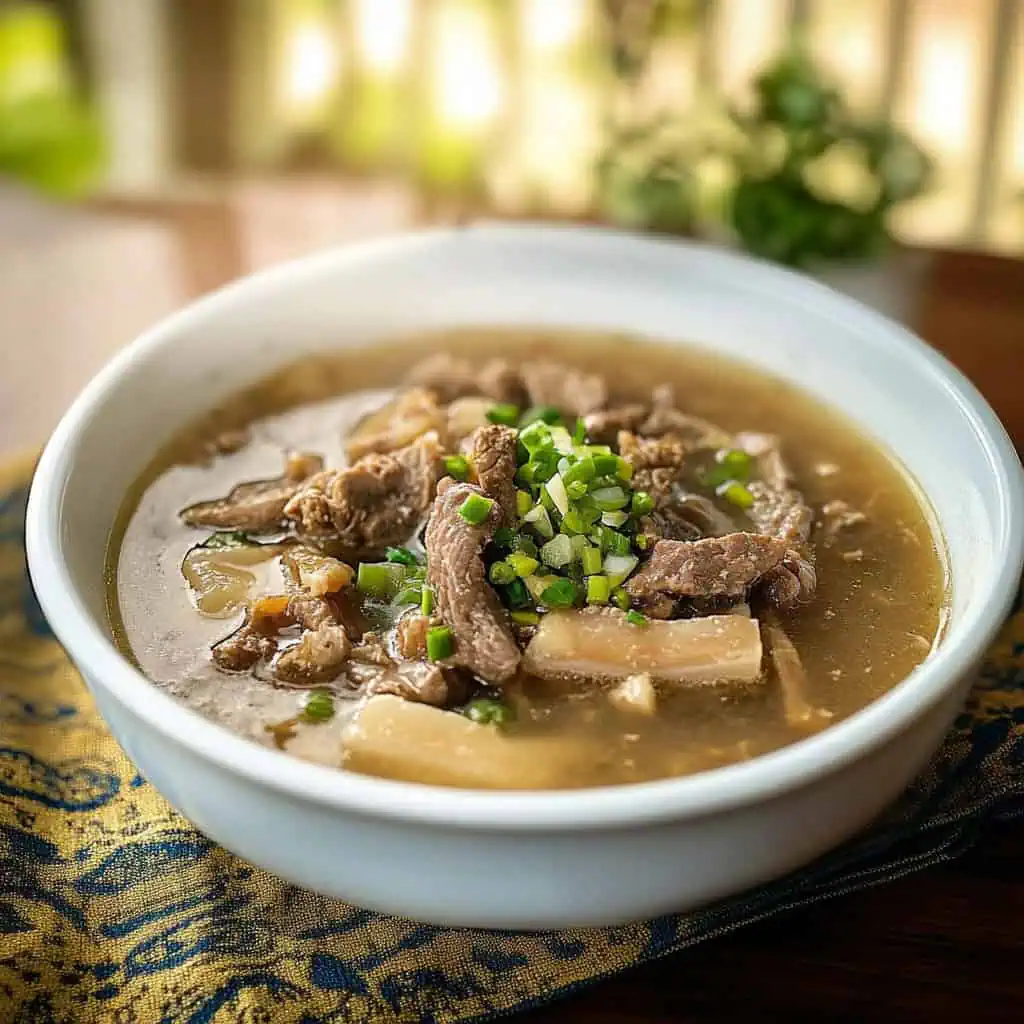





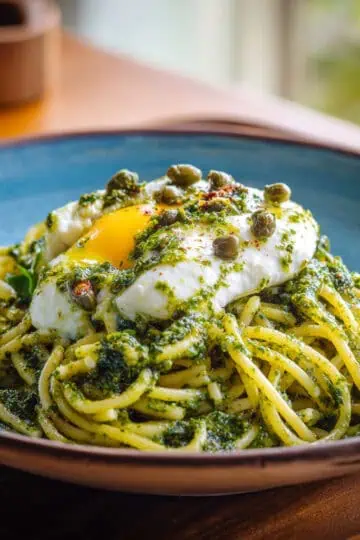
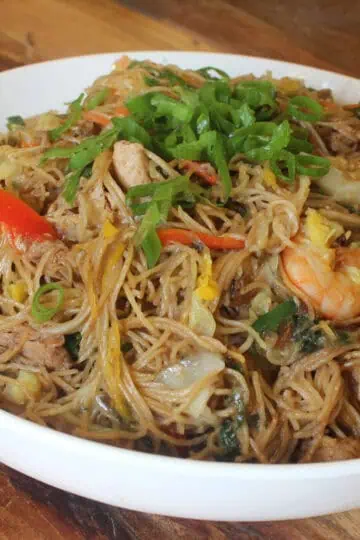
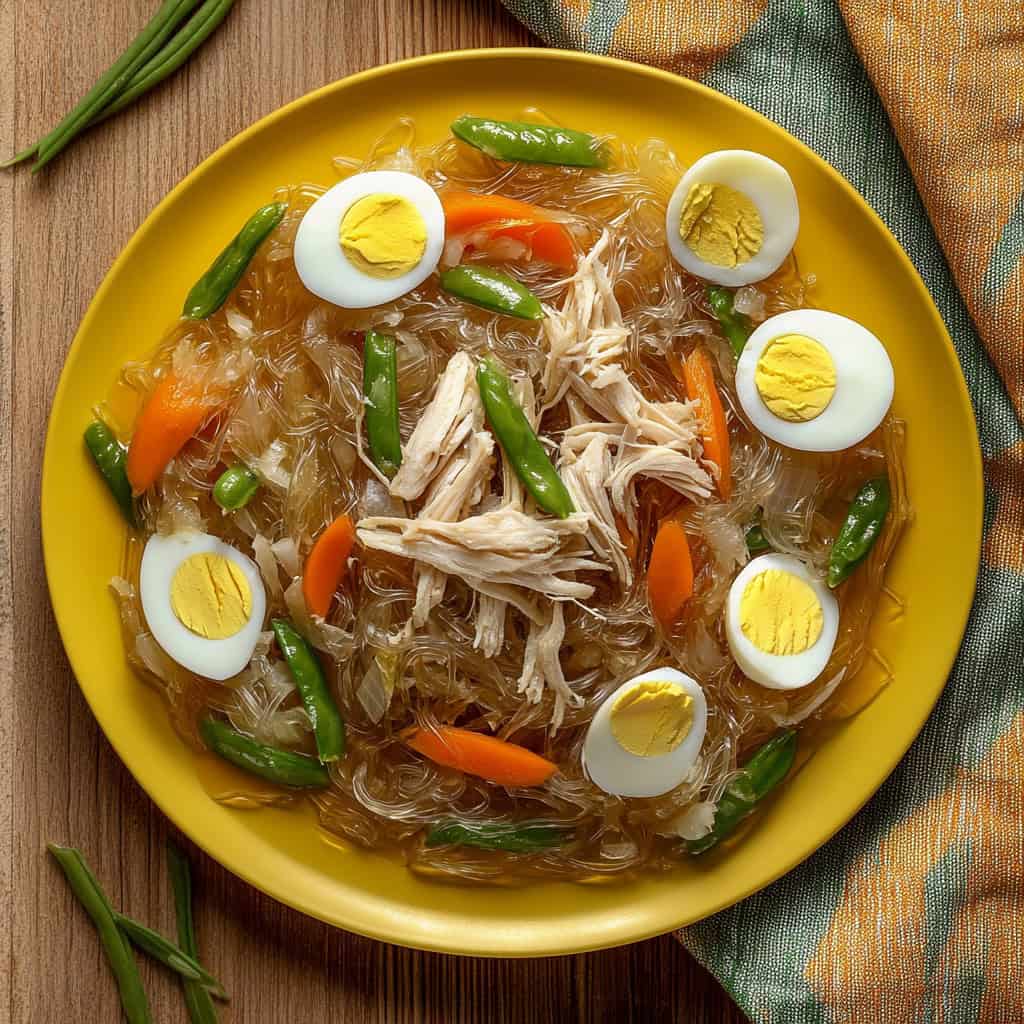

Comments
No Comments